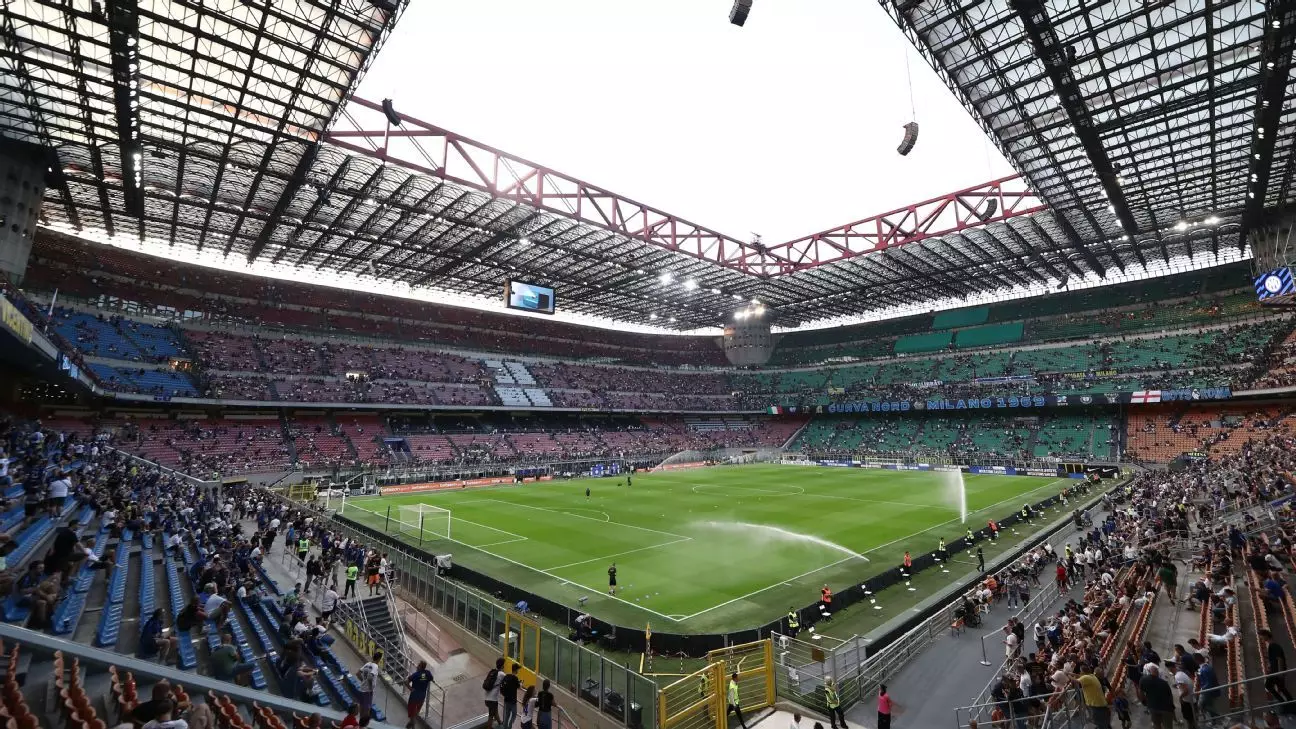The ongoing saga of AC Milan and Inter Milan regarding the future of their iconic San Siro stadium has taken a significant turn. As the clubs navigate the complex landscape of urban development, they have officially walked away from a previously considered renovation of the historic venue. Instead, both teams are now coalescing around the ambitious idea of constructing a state-of-the-art stadium within the same vicinity. The shift reflects not only the practical concerns of modernization but also a strategic leap towards enhancing financial competitiveness in the landscape of European football.
San Siro has long stood as a monument of Italian football, capturing the spirited memories of countless matches since its inception. However, Mayor Giuseppe Sala pointed out that despite its charm and history, the stadium’s renovation proved financially impractical. The historical factors complicate this initiative, citing extensive costs without a corresponding return on investment. The decision underscores the balancing act between preserving cultural heritage and the need for modern facilities that can generate revenue, particularly at a time when both clubs are under the financial scrutiny of foreign investment entities.
In response to burgeoning revenue challenges, both AC Milan and Inter Milan are advocating for a new shared stadium that promises to enhance their financial footing. The necessity for modern facilities has never been more pronounced. Clubs across Europe are ramping up investment in infrastructure to attract sponsorships and maximize matchday revenues. By establishing a new dual stadium, Milan and Inter aim to close the financial gap with their European counterparts, presenting a united front that also strengthens local fan engagement.
Despite their collaborative aspirations, these plans have not been without hurdles. The previous ambition to build separate stadiums on the outskirts of the city faced political backlash, coupled with restrictions stemming from heritage conservation efforts surrounding San Siro. The complexity of navigating local governance highlights the intertwined nature of sports, politics, and community priorities. Mayor Sala’s acknowledgment of the difficulties associated with stadium construction in Italy serves as a reality check for the clubs and their supporters.
The recent meetings between the clubs and the mayor indicate that AC Milan and Inter are not merely at an impasse but are actively pursuing a path forward. They are seeking clarity on economic valuations of their proposed sites and the constraints posed by heritage regulations. The broader implications of their vision include a commitment to maintaining connections with the local community while also aiming for a brighter financial future.
Ultimately, while the future of the San Siro remains a contentious topic, the determination of Milan and Inter to forge ahead with new stadium plans signals a transformative era for both clubs. They stand at a crossroads, guided by ambitions that extend beyond the pitch, embracing modernization, commercial viability, and the challenges that come with shaping a shared legacy in Italian football.

